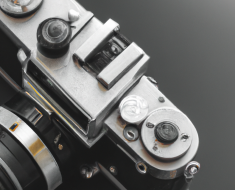“Be prepared for anything with our tactical backpack essentials.”
Water Filtration Systems
When it comes to survival situations, having access to clean drinking water is essential. In an emergency scenario, you may not have access to clean water sources, which is why having a reliable water filtration system in your tactical backpack is crucial. Water filtration systems are designed to remove impurities and contaminants from water, making it safe to drink. There are several different types of water filtration systems available, each with its own set of features and benefits.
One popular option for water filtration in survival situations is the portable water filter straw. These compact devices are lightweight and easy to carry, making them ideal for inclusion in your tactical backpack. Water filter straws are designed to be used directly in a water source, allowing you to drink safely without the need for additional equipment. These filters typically use a combination of activated carbon and other filtration media to remove bacteria, parasites, and other harmful substances from the water.
Another option for water filtration in survival situations is the pump-style water filter. These devices are slightly larger than water filter straws but are still compact enough to fit in your tactical backpack. Pump-style water filters work by forcing water through a series of filters, removing impurities and contaminants in the process. These filters are capable of removing a wide range of contaminants, making them a versatile option for survival situations.
In addition to portable water filters, there are also gravity-fed water filtration systems available. These systems use gravity to filter water through a series of filters, removing impurities and contaminants along the way. Gravity-fed water filters are typically larger and heavier than other options, but they are capable of filtering larger quantities of water at once, making them ideal for group survival situations.
When choosing a water filtration system for your tactical backpack, it’s important to consider factors such as filtration capacity, ease of use, and maintenance requirements. Look for a system that is capable of removing a wide range of contaminants, including bacteria, parasites, and chemicals. Additionally, choose a system that is easy to use and maintain, as you may not have access to replacement filters or parts in a survival situation.
It’s also a good idea to practice using your water filtration system before you find yourself in an emergency scenario. Familiarize yourself with the operation of the filter and ensure that you know how to properly clean and maintain it. This will help ensure that you can effectively use your water filtration system when it matters most.
In conclusion, having a reliable water filtration system in your tactical backpack is essential for survival situations. Whether you choose a portable water filter straw, a pump-style water filter, or a gravity-fed system, having access to clean drinking water can make all the difference in an emergency scenario. Be sure to choose a system that is capable of removing a wide range of contaminants, and practice using it before you find yourself in a survival situation. With the right water filtration system in your tactical backpack, you can stay hydrated and healthy no matter what challenges come your way.
Emergency Shelter Options
When it comes to survival situations, having the right gear can make all the difference. One essential item that should be in every survivalist’s arsenal is a tactical backpack. These backpacks are designed to withstand the rigors of outdoor adventures and provide ample storage for all the necessary supplies. In this article, we will discuss some key essentials to pack in your tactical backpack for emergency shelter situations.
First and foremost, a reliable shelter is crucial for survival in the wilderness. In a pinch, a lightweight and compact tent or tarp can provide protection from the elements. Look for a shelter that is easy to set up and durable enough to withstand harsh weather conditions. A quality tent or tarp can make all the difference in keeping you safe and comfortable during an emergency situation.
In addition to a shelter, it’s important to pack a sleeping bag or emergency blanket in your tactical backpack. These items will help keep you warm and insulated from the cold ground. Look for a sleeping bag that is lightweight and compact, yet still provides adequate warmth for cold nights. An emergency blanket is also a great option for added warmth and can be used as a makeshift shelter if needed.
Another essential item to pack in your tactical backpack is a fire starter kit. In emergency situations, having the ability to start a fire can be a lifesaver. Pack waterproof matches, a lighter, and some fire starter material such as cotton balls soaked in petroleum jelly. These items will help you quickly and easily start a fire for warmth, cooking, and signaling for help if needed.
Food and water are also essential items to pack in your tactical backpack for emergency shelter situations. Pack lightweight and non-perishable food items such as energy bars, jerky, and dried fruits. These items will provide you with much-needed energy and sustenance during a survival situation. Additionally, pack a water filtration system or purification tablets to ensure you have access to clean drinking water.
In addition to these essentials, it’s important to pack a few extra items in your tactical backpack for emergency shelter situations. A multi-tool can come in handy for various tasks such as cutting rope, opening cans, and repairing gear. A first aid kit is also essential for treating minor injuries and illnesses that may occur during a survival situation. Pack basic supplies such as bandages, antiseptic wipes, and pain relievers.
Overall, having a well-stocked tactical backpack can make all the difference in a survival situation. By packing essential items such as shelter, sleeping gear, fire starter kit, food, water, and additional supplies, you can be better prepared for emergencies in the wilderness. Remember to regularly check and update your backpack to ensure all items are in good condition and ready for use. Stay safe and be prepared for anything with a well-equipped tactical backpack.
Multi-Tool and Knife Selection
When it comes to preparing for survival situations, having the right tools at your disposal can make all the difference. One of the most essential items to have in your tactical backpack is a reliable multi-tool and knife. These versatile tools can help you tackle a wide range of tasks, from cutting through rope to fixing gear on the fly. In this article, we’ll discuss some key factors to consider when selecting a multi-tool and knife for your survival kit.
First and foremost, durability is key when it comes to choosing a multi-tool and knife for survival situations. Look for tools made from high-quality materials such as stainless steel or titanium, as these materials are known for their strength and resistance to corrosion. A sturdy construction will ensure that your tools can withstand the rigors of outdoor use and last for years to come.
Another important factor to consider is the range of functions offered by the multi-tool. Look for a tool that includes essential features such as pliers, screwdrivers, wire cutters, and a saw blade. These tools can come in handy for a wide range of tasks, from building shelter to repairing equipment. Additionally, consider the size and weight of the multi-tool, as you’ll want to choose a tool that is compact and lightweight enough to carry comfortably in your backpack.
In addition to a multi-tool, a reliable knife is also an essential item for any survival kit. Look for a knife with a fixed blade, as these knives are known for their strength and durability. A sharp blade is crucial for tasks such as cutting rope, preparing food, and building shelter. Consider the blade length and shape when selecting a knife, as these factors can impact the knife’s versatility and performance in different situations.
When choosing a knife for your survival kit, consider factors such as blade material, handle design, and sheath quality. High-quality blade materials such as stainless steel or carbon steel are known for their sharpness and edge retention. A comfortable handle design is also important, as it will ensure a secure grip and reduce hand fatigue during extended use. Additionally, a durable sheath will protect the knife blade and allow for safe and convenient storage in your backpack.
In conclusion, selecting the right multi-tool and knife for your tactical backpack is essential for preparing for survival situations. Look for tools that are durable, versatile, and reliable, as these qualities will ensure that your tools can handle a wide range of tasks in outdoor environments. Consider factors such as construction materials, range of functions, blade design, and handle comfort when choosing your tools. With the right multi-tool and knife at your disposal, you’ll be well-equipped to handle whatever challenges come your way in the great outdoors.
First Aid Kit Must-Haves
When it comes to preparing for survival situations, having a well-stocked first aid kit is essential. Whether you’re out in the wilderness or facing a natural disaster, having the right supplies on hand can make all the difference in an emergency. In this article, we’ll cover some of the must-have items to include in your tactical backpack first aid kit.
One of the most important items to have in your first aid kit is a variety of bandages. From adhesive bandages for minor cuts and scrapes to sterile gauze pads for larger wounds, having a selection of bandages on hand can help you quickly and effectively treat injuries. It’s also a good idea to include some medical tape to secure bandages in place.
In addition to bandages, it’s important to have antiseptic wipes or alcohol pads to clean wounds and prevent infection. These small, individually packaged wipes are easy to carry and can be used to clean cuts and scrapes before applying a bandage. Including a small bottle of antiseptic solution can also be helpful for cleaning larger wounds.
Another essential item to include in your first aid kit is a pair of tweezers. Tweezers can be used to remove splinters, ticks, or other debris from wounds. Having a pair of tweezers on hand can help prevent infection and make it easier to clean and dress wounds properly.
It’s also a good idea to include a pair of scissors in your first aid kit. Scissors can be used to cut bandages, gauze, or clothing in an emergency situation. Look for a pair of small, sharp scissors that are easy to carry in your backpack.
In addition to bandages and wound care supplies, it’s important to include basic medications in your first aid kit. Pain relievers such as ibuprofen or acetaminophen can help alleviate pain and reduce fever in an emergency. Antihistamines can also be helpful for treating allergic reactions.
Including a small supply of over-the-counter medications for common ailments such as diarrhea, nausea, or indigestion can also be helpful in a survival situation. Be sure to check expiration dates regularly and replace any expired medications in your first aid kit.
Finally, it’s important to include a first aid manual in your tactical backpack. A first aid manual can provide guidance on how to treat common injuries and illnesses in an emergency. It can also help you identify when to seek professional medical help.
In conclusion, having a well-stocked first aid kit in your tactical backpack is essential for survival situations. By including bandages, antiseptic wipes, tweezers, scissors, basic medications, and a first aid manual, you can be prepared to treat injuries and illnesses in an emergency. Be sure to regularly check and restock your first aid kit to ensure that you have the supplies you need when you need them.
Navigation and Communication Devices
When venturing into the great outdoors, whether for a day hike or a multi-day camping trip, it’s essential to be prepared for any situation that may arise. One of the most important aspects of being prepared is having the right gear, and when it comes to survival situations, having the right navigation and communication devices can make all the difference.
One of the most basic navigation tools that every outdoor enthusiast should have in their tactical backpack is a reliable compass. A compass is a simple yet essential tool that can help you determine your direction and navigate through unfamiliar terrain. When choosing a compass, look for one that is durable, easy to read, and accurate. It’s also a good idea to practice using your compass before heading out on a hike or camping trip so that you feel confident in your ability to navigate with it.
In addition to a compass, a GPS device can also be a valuable tool for navigating in the wilderness. GPS devices use satellite technology to pinpoint your location and provide you with detailed maps and directions. While a GPS device can be a great asset, it’s important to remember that they rely on batteries, so be sure to pack extra batteries or a portable charger to keep your device powered up.
Another important communication device to have in your tactical backpack is a two-way radio. Two-way radios allow you to communicate with others in your group, even when you’re out of cell phone range. In an emergency situation, being able to communicate with your companions can be a lifesaver. Look for a two-way radio that is durable, has a long battery life, and is easy to use.
In addition to a two-way radio, a signaling device such as a whistle or signal mirror can also be useful for attracting attention in an emergency. Whistles are lightweight and easy to carry, and can be heard from a distance. Signal mirrors are small, lightweight mirrors that can be used to reflect sunlight and signal for help. Both of these devices are simple yet effective tools for communication in survival situations.
When packing your tactical backpack for a hike or camping trip, it’s important to consider the terrain and weather conditions you’ll be facing. If you’ll be navigating through dense forests or rugged terrain, a topographic map and a handheld GPS device can be invaluable tools for staying on course. In snowy or icy conditions, an ice axe and crampons can help you navigate safely through slippery terrain.
In conclusion, having the right navigation and communication devices in your tactical backpack can mean the difference between a successful outdoor adventure and a dangerous situation. By packing essentials such as a compass, GPS device, two-way radio, and signaling devices, you can be prepared for any situation that may arise. Remember to practice using your gear before heading out on a hike or camping trip, and always be aware of your surroundings and the potential risks of the wilderness. With the right gear and preparation, you can enjoy your outdoor adventures with confidence and peace of mind.





